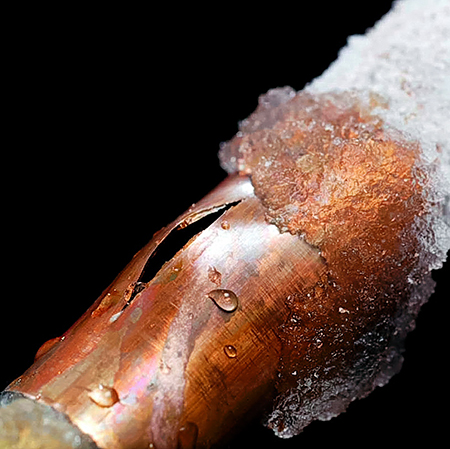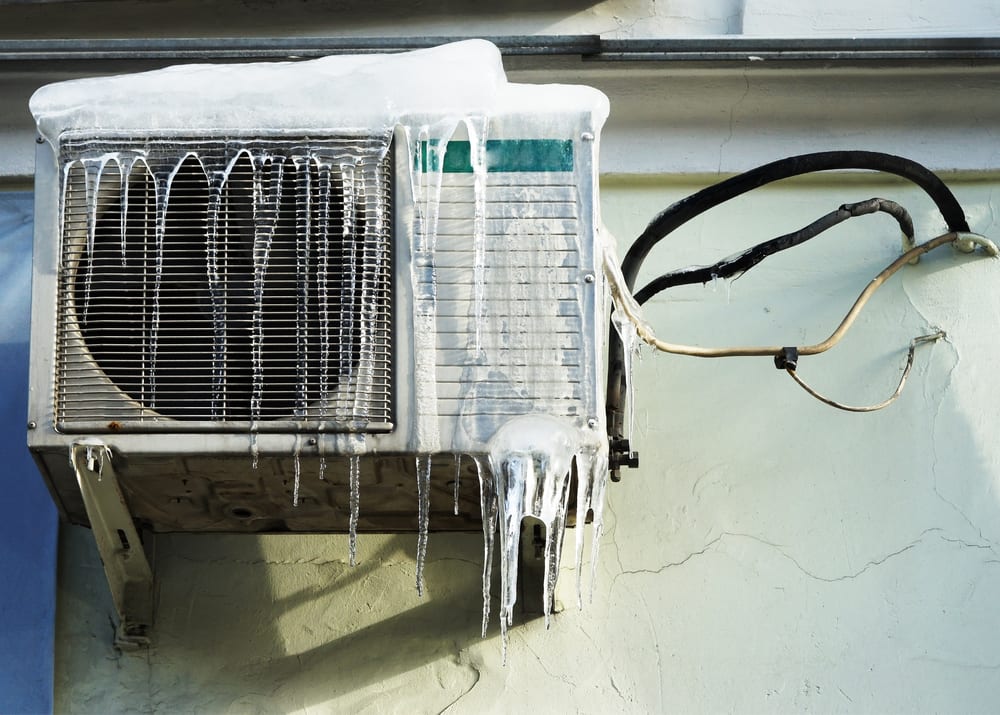Advice on Unfreezing a Frozen AC Pipe - Restoring Proper Functionality
Advice on Unfreezing a Frozen AC Pipe - Restoring Proper Functionality
Blog Article
This post following next about Why Is Ice On My Outside Air Conditione is absolutely enjoyable. Give it a go and make your own personal results.

Introduction
Discovering that your AC pipe is frozen can be concerning, especially throughout warm summertime when you count on your ac unit one of the most. Comprehending what to do in such a scenario is vital to stop additional damage to your cooling system and guarantee your convenience inside your home.
Understanding the Causes
Several variables can contribute to the cold of an a/c pipe. Understanding these reasons can assist you deal with the issue properly.
Absence of Airflow
One typical reason for a frozen air conditioner pipeline is inadequate air flow. When the airflow over the evaporator coil is limited, it can trigger the coil to drop below freezing temperature level, resulting in ice formation on the pipeline.
Reduced Refrigerant Levels
Insufficient cooling agent levels in your AC system can additionally result in an icy pipe. Low refrigerant degrees can trigger the pressure in the system to go down, leading to the cold of moisture on the evaporator coil.
Winter Conditions
In chillier environments, freezing temperatures outside can add to the cold of air conditioning pipelines. If your a/c device is not effectively shielded or if there are leakages in the ductwork, chilly air can infiltrate the system, triggering the pipeline to freeze.
Dirty Air Filters
Unclean or clogged air filters can restrict air flow in your AC system, causing different issues, consisting of a frozen pipeline. It's necessary to change or cleanse your air filters consistently to make certain appropriate air movement and avoid ice build-up.
Indicators of a Frozen Air Conditioning Pipe
Identifying the signs of a frozen AC pipeline is essential for punctual activity.
Decreased Airflow
If you observe a significant reduction in air movement from your vents, it could indicate an icy pipeline.
Ice Buildup on the Pipe
Noticeable ice accumulation on the cooling agent line or the evaporator coil is a clear indication of a frozen a/c pipeline.
Strange Sounds from the Unit
Unusual noises, such as hissing or gurgling, originating from your air conditioner unit can indicate that there's ice existing on the pipe.
Immediate Actions to Take
When faced with an icy air conditioner pipe, it's important to act swiftly to prevent additional damages to your air conditioning system.
Shutting off the air conditioner
The primary step is to switch off your a/c unit to avoid the system from running and exacerbating the issue.
Checking for Blockages
Check the location around the interior system for any type of obstructions that may be blocking air flow, such as furniture or drapes.
Defrosting the Pipe
You can utilize gentle approaches like positioning towels taken in cozy water around the icy pipeline to assist thaw it gradually.
Safety nets
Taking safety nets can assist prevent future incidents of a frozen air conditioner pipe.
Regular Maintenance Checks
Schedule normal upkeep talk to an expert HVAC service technician to make sure that your a/c system is running successfully.
Transforming Air Filters
Consistently change or clean your air filters to prevent airflow restrictions and keep optimum efficiency.
Shielding Exposed Pipes
If your air conditioner pipelines are subjected to cool temperature levels, take into consideration protecting them to prevent cold throughout winter months.
Seeking Professional Help
If DIY approaches fall short to solve the concern or if you're uncertain regarding just how to continue, it's ideal to look for support from a qualified HVAC service technician.
When DIY Methods Fail
If your attempts to thaw the pipe or address other issues are unsuccessful, it's time to contact a specialist.
Importance of Hiring a Professional HVAC Technician
A licensed HVAC service technician has the proficiency and tools required to diagnose and fix concerns with your air conditioner system safely and efficiently.
Conclusion
Dealing with an icy air conditioner pipeline can be an irritating experience, yet recognizing just how to react can assist lessen damages and recover comfort to your home. By recognizing the reasons, recognizing the indicators, and taking punctual action, you can effectively resolve the problem and avoid future occurrences.
What to Do If Your AC Line Is Frozen
Make Sure All Supply and Return Air Vents Are Open
If you notice problems with airflow, the first thing you should do is check your supply and return vents. Supply vents distribute clean, conditioned air throughout your home. As this air becomes stale, it’s pulled into the return vent, where it’s reconditioned before being sent back out through the supply vent.
When these vents are closed, air won’t flow in the home. Before examining your AC, check the vents in every room and ensure they’re all open.
Check for a Dirty Air Filter
Another possible cause of limited airflow is a dirty air filter. Your air conditioner’s filters catch elements you don’t want to breathe in, such as dirt and dust. Over time, filters can become clogged, ultimately blocking air from flowing in and out. The lack of airflow can then cause the entire coil to freeze and will completely restrict any air from moving through it. The AC may need to be powered off for one to two days to allow the coil to thaw after replacing the filter to allow proper functioning of the unit. This debris can also accumulate on your AC’s evaporator coil, requiring a more serious repair. In general, air filters should be cleaned regularly (about every two weeks).
Assess Your Outdoor Unit
In addition to checking your AC, assessing the outdoor unit is a good idea. Also known as the condensing unit, it works with your interior unit to release heat outside. An issue with the outdoor unit can result in rising internal temperatures.
Overgrown Shrubs or Clogged Leaves
From leaves and twigs to shrubs and debris, there’s no shortage of outdoor elements that can accumulate around your condensing unit. When these elements get lodged inside the unit, they can block airflow. Fortunately, removing the blockage can solve the problem.
Sounds of a Broken Fan
Shrubs and leaves aren’t the only things that can impede your outdoor unit’s airflow. If the fan is broken, the unit won’t be able to properly get rid of heat — which means the internal temperature won’t go down. First, make sure the fan is spinning. If it is, check for the following sounds of a broken fan:
Buzzing Rattling Screeching Hissing Clicking Preventative Measures
Nobody wants to deal with a frozen AC line. In addition to causing problems with your air conditioner, they require professional repairs. On the bright side, there are preventative measures you can take to help ensure this issue doesn’t arise in the first place.
https://www.coopergreenteam.com/blog/what-to-do-if-ac-line-frozen

We hope you enjoyed our piece on Have a Frozen AC Line? Here’s How to Fix It. Thanks a ton for finding the time to read through our article. Those who enjoyed our blog post kindly do not forget to pass it around. Thanks so much for going through it.
Schedule Your Job Now Report this page